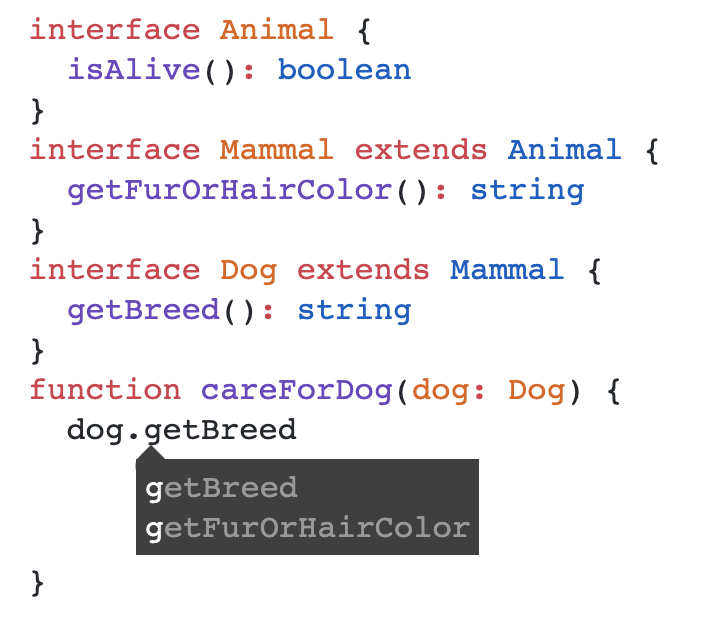[TypeScript] Interface
An interface is a way of defining an object type. An “object type” can be thought of as, “an instance of a class could conceivably look like this”.
For example, string | number is not an object type, because it makes use of the union type operator.
Inheritance in interfaces
EXTENDS
If you’ve ever seen a JavaScript class that “inherits” behavior from a base class, you’ve seen an example of what TypeScript calls a heritage clause: extends
class Animal {
eat(food) {
consumeFood(food)
}
}
class Dog extends Animal {
bark() {
return "woof"
}
}
const d = new Dog()
d.eat
d.bark- Just as in in JavaScript, a subclass
extendsfrom a base class. - Additionally a “sub-interface”
extendsfrom a base interface, as shown in the example below

IMPLEMENTS
TypeScript adds a second heritage clause that can be used to state that a given class should produce instances that confirm to a given interface: implements.
interface AnimalLike {
eat(food): void
}
class Dog implements AnimalLike {
// Error: Class 'Dog' incorrectly implements interface 'AnimalLike'.
// Property 'eat' is missing in type 'Dog' but required in type 'AnimalLike'.
bark() {
return "woof"
}
}
Open Interfaces
TypeScript interfaces are “open”, meaning that unlike in type aliases, you can have multiple declarations in the same scope:
You may be asking yourself: where and how is this useful?
Imagine a situation where you want to add a global property to the window object
window.document // an existing property
window.exampleProperty = 42
// tells TS that `exampleProperty` exists
interface Window {
exampleProperty: number
}
What we have done here is augment an existing Window interface that TypeScript has set up for us behind the scene.
Choosing which to use
In many situations, either a type alias or an interface would be perfectly fine, however…
- If you need to define something other than an object type (e.g., use of the
|union type operator), you must use a type alias - If you need to define a type to use with the
implementsheritage term, it’s best to use an interface - If you need to allow consumers of your types to augment them, you must use an interface.

